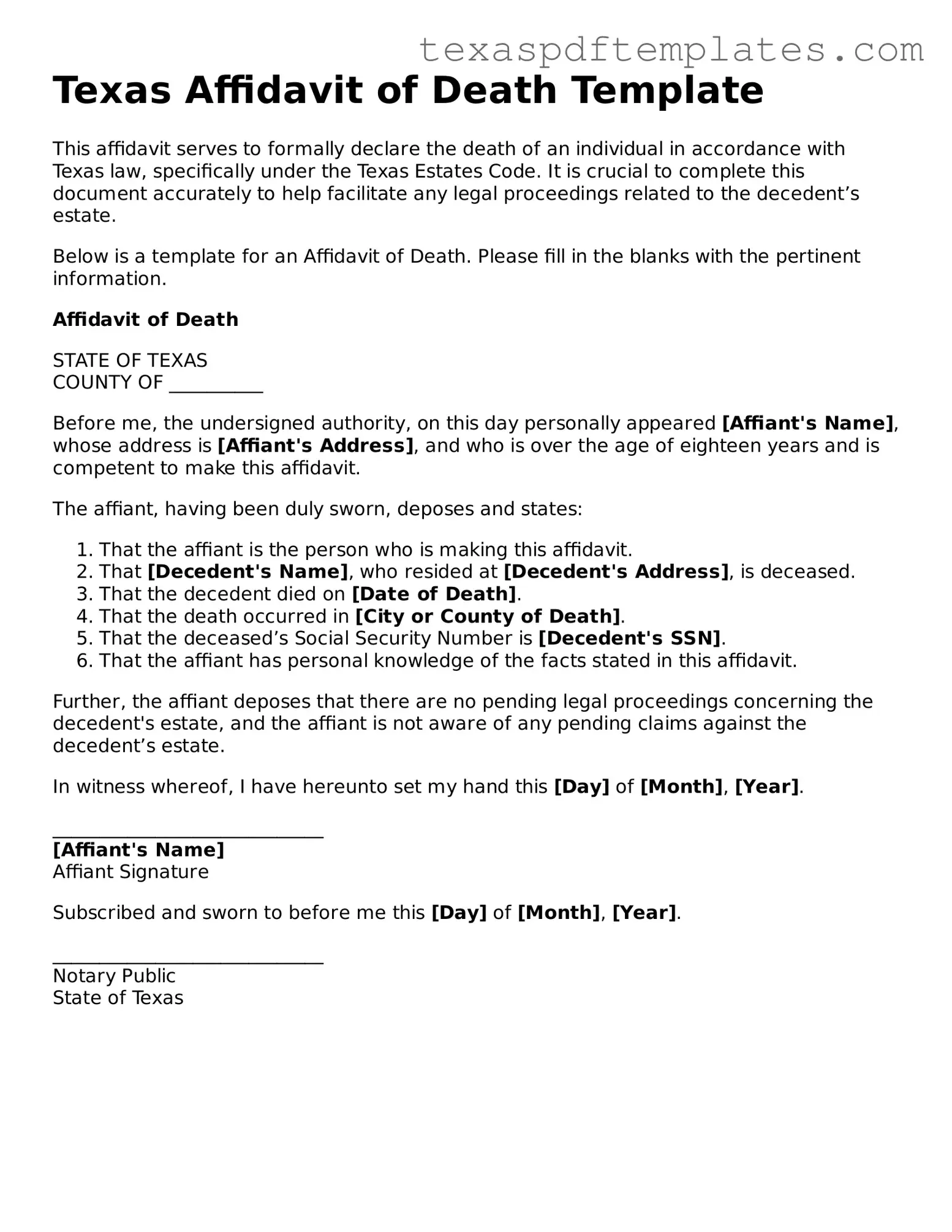Texas Affidavit of Death Template
This affidavit serves to formally declare the death of an individual in accordance with Texas law, specifically under the Texas Estates Code. It is crucial to complete this document accurately to help facilitate any legal proceedings related to the decedent’s estate.
Below is a template for an Affidavit of Death. Please fill in the blanks with the pertinent information.
Affidavit of Death
STATE OF TEXAS
COUNTY OF __________
Before me, the undersigned authority, on this day personally appeared [Affiant's Name], whose address is [Affiant's Address], and who is over the age of eighteen years and is competent to make this affidavit.
The affiant, having been duly sworn, deposes and states:
- That the affiant is the person who is making this affidavit.
- That [Decedent's Name], who resided at [Decedent's Address], is deceased.
- That the decedent died on [Date of Death].
- That the death occurred in [City or County of Death].
- That the deceased’s Social Security Number is [Decedent's SSN].
- That the affiant has personal knowledge of the facts stated in this affidavit.
Further, the affiant deposes that there are no pending legal proceedings concerning the decedent's estate, and the affiant is not aware of any pending claims against the decedent’s estate.
In witness whereof, I have hereunto set my hand this [Day] of [Month], [Year].
_____________________________
[Affiant's Name]
Affiant Signature
Subscribed and sworn to before me this [Day] of [Month], [Year].
_____________________________
Notary Public
State of Texas
